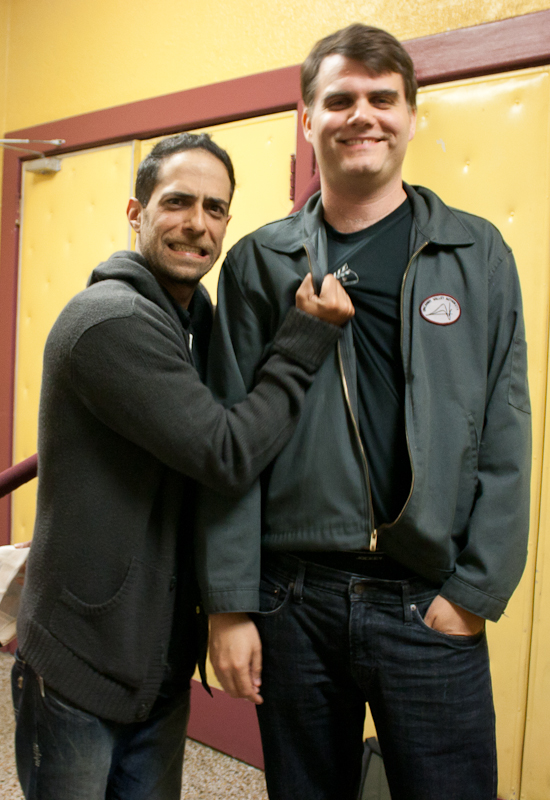
Jim Munroe never cared to be a director. As a science-fiction writer, he wanted to expand on current affairs and convey them in his work.
“I try to follow them through to their possible conclusions,” said Munroe, the writer behind Ghosts with Shit Jobs.
The Mayfair Theatre held its screening of the film with Munroe and executive producer Anthony Cortese in tow. The two answered audience questions after the credits rolled.
The film presents Earth in the year 2040. North America is no longer the superpower it once was. Asia has grown into a domineering country that has taken away North America’s high-paying careers.
All that is left are the “ghosts,” a derogative Cantonese term for North Americans who work low-salary public-service jobs.
Set in downtown Toronto, the film only cost $4,000 to produce.
The directors’ preference to digitally shoot Ghosts dramatically cut the production cost.
In an interview with the Charlatan, Munroe discussed the contentious issue of digital production in Hollywood, which allows the director to shoot a movie without worrying about the cost of using too much film stock.
Munroe’s curiosity for the medium was piqued when his friend bought a digital video camera around the year 2000.
He discussed the novelty of filming and editing, with “the idea that you can just shoot . . . then edit it and put it on the internet with no cost.”
He said this contrasts movies shot on film, where filmmakers are “burning money for every minute you shoot.”
Shot in a mockumentary style, the entire movie is shown through the perspective of a television show called “Window on the World.”
Based in the prosperous, first-world Asia, the television crew travels to North America to interview individuals who work various “working class” jobs.
The production team on Ghosts did not consist of individuals with a single specialization, but with a knowledge and know-how of almost every task to be handled during a movie’s production.
“We like people to understand other people on set in terms of what work they’re doing and for people to pitch in wherever they’re needed,” Munroe said.
Workshops, or as Munroe puts them, “skill shares,” were set up to promote this work morale.
“A producer on our project might be interested in editing … [skills shares] basically allow people to develop in other areas,” he said.
“Even if they don’t end up using these skills on a project they have a better understanding of what other people do.”
Munroe said that it improves communication amongst the team.
“If they want to make their own projects it gets them one step closer to being independent in that regard.”
This kind of work environment creates a sense of community that Munroe believes cultivates creativity, and in turn allows a large group of collaborators with various skills to complete a movie as efficiently and cost-effective as possible.
Internally and publicly, Munroe’s vision has bestowed individuals who have a passion to create and inspire, exemplifying the power to produce movies that rival the scope of Hollywood productions.





